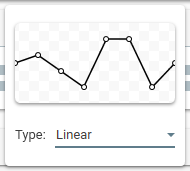When raser1 was talking about developing a new script format (like 2 years ago) I suggested adding tangent information to script points. That way you could use tangent handles in scripter software to create really accurate motions without having to add multiple points. I think the consensus was that it would be unnecessary and it would make scripting longer. It would also not work on most devices.
MFP wont mind if the script is already interpolation, it will just unnecessarily do some math but it will work fine.
Yea I suggested that a long time ago. The player would calculate tangents using multiple points on its side and then it would just send next point and next tangent for interpolation on OSR.
Next thing that I would add would be a command buffer in the firmware, this would require the firmware communication to be two way. OSR would send a request for a chunk of next commands to the player each time it is about to finish the last chunk, for example 1-2 seconds.
This way there would be no stuttering at all caused by player/OSR trying to synchronize the next script command, currently the player has to send a move command and time it just right to send the next one when it finishes on the firmware. Inaccuracies in this timing can cause micro stutters.









